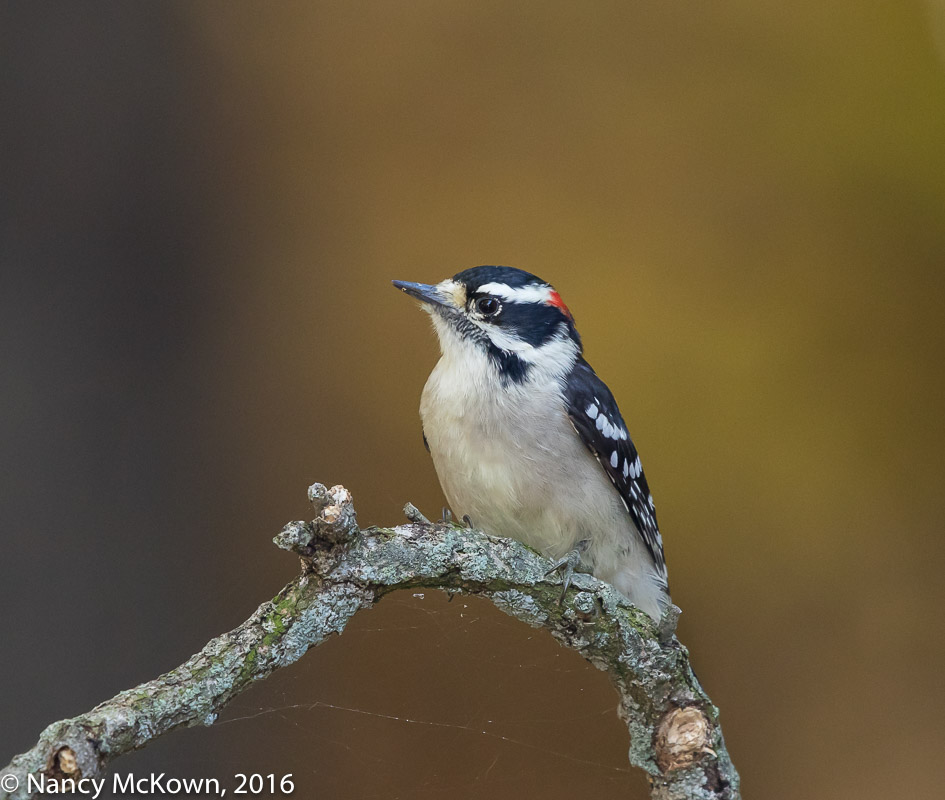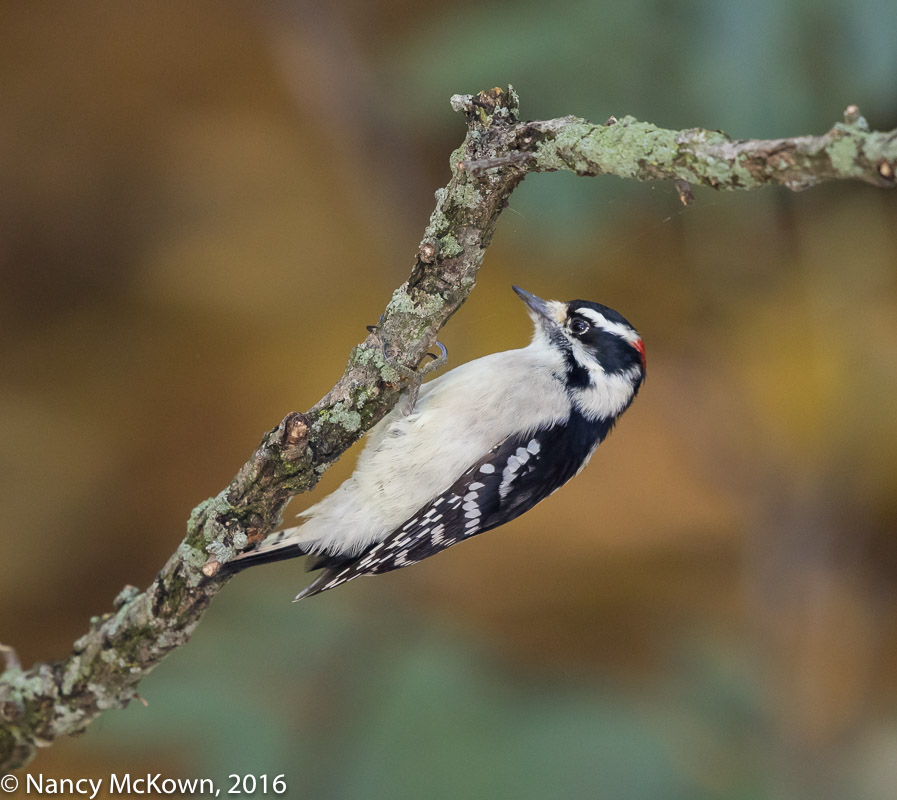Photographing Downy Woodpeckers
I think Downy Woodpeckers are one of the loveliest year-round residents in our yard. They are as numerous and predictable as Mourning Doves in Southwest Michigan. The ones around us have become acclimated to the camera and appear tolerant and watchful when I come around.
Like most birds, Downy Woodpeckers spend more time looking up toward the skies in search of predators than they do watching me. When they sense danger, most other birds quickly scatter, but Downy Woodpeckers often hide in what appears to be plain sight, hoping to camouflage themselves by being silent and motionless until the danger passes.

ISO1600; f/7.1; 1/250 Second
Little Drummers
Downy Woodpeckers are not much bigger than the other familiar song birds at the feeders (titmice, chickadees, nuthatches). A small patch of red on the back of the head distinguishes the Downy male from the female. Their bills are straight and sharp, but do not look oversized on their faces like the beaks on larger woodpeckers do. In the winter you can often hear them excavating tree trunks and branches probing for deeply embedded insects and larvae. As Spring approaches they will drum more to communicate and entice partners.
Sharing Bird Photos
I love the challenge of photographing birds and publishing my experiences on a weekly web blog. Where else can photographers connect and share their work with so many people all over the world? Best of all, it gets me out to explore nature with my camera.
Anyone who maintains a blog knows that concealed naysayers and marauders come with the web publishing territory. Putting my images (good and bad) out there also makes me vulnerable to everything from condescending feedback to outright thievery.

ISO1600; f/71; 1/250 Second
Pilfering Images
The web is a treasure trove of art that is technically easy to snatch…and apparently lots of thieves do so without a care. I was not surprised to learn that some individuals are illegally stealing my images and posting them elsewhere on the web without permission.
Google Analytics has web diagnostic programs that provide a multitude of reports about how my site appeals to readers. It calculates how many people visit my site, for how long, and from whence they come. However, Google Analytics does not spotlight web pilfering. To find out if your web images are being used for unauthorized purposes, tools like “Google Image Search” and “TinEye.com” are available. You simply upload an image and these tools will point to where else that image can be found on the web.
What to Do
One of the the most logical ways to foil attempts of thieves to sell hard copies of copyrighted images is to reduce the size of the image file to 1020×800 pixels, at 200 PPI resolution. The photo still looks decently clear and large on the web, but can not be used to print images larger that 4″x4″ or 5″x4″. This also has the added benefit of reducing site load times. This strategy won’t do much to thwart those individuals who want to display your images on a website or use them as a model for their art work.
If you wish to read more on this topic, this link provides excellent information: “What to Do If Your Photographs are Stolen” by KeriLynn Engel.
Note: I don’t actively market my photographs, so I always appreciate it when artists contact me to ask for permission to use one of my bird images. My fee for a one-time use non-exclusive license is $15.00 per image for reproduction up to 5″x 7″.









I share my bird photos with several bird clubs, whose members often ask permission to use them. I also send them to official state bird organizations for educational purposes. I have no problem with folks using my photos as long as I get recognition for the photo. I personally, sell matted photos and greeting cards using my photos. I guess I would not be very happy, if I knew someone had “stolen” my photo especially if they would profit from using it.
Hi Nancy,
I was happy to find your site (your beautiful photo of a male Red-breasted Merganser in breeding plumage led me to it).
The whole thievery of photos things is annoying, to say the least. Good advice on your part – a reminder to reduce the file size when uploading photos.
Downies are very likely our only woodpecker here in Chignik Lake, and we listen for their distinctive “peek, peek” call every time we’re out. They are considered “rare” in this area, but on average we encounter individuals and sometimes pairs a few times a week. Saugatuck looks like a fun place – quiet in the wintertime, I would imagine. I’m looking forward to catching up on your previous posts.
Kind regards,
Jack Donachy
Chignik Lake, Alaska
Hi Jack,
Thank you for reading my blog and commenting. I find it exciting knowing that a bird lover (and photographer?)as far away from me as Alaska enjoys my site.
Yes, winters in Saugatuck are quiet- not a lot of people or birds. We are very close to Lake Michigan – a migration corridor – so I hope to see better weather and many more transient birds in April/May/June.
Take care. If you have bird images you wish to share, I would love to see them.
Best regards,
Nancy